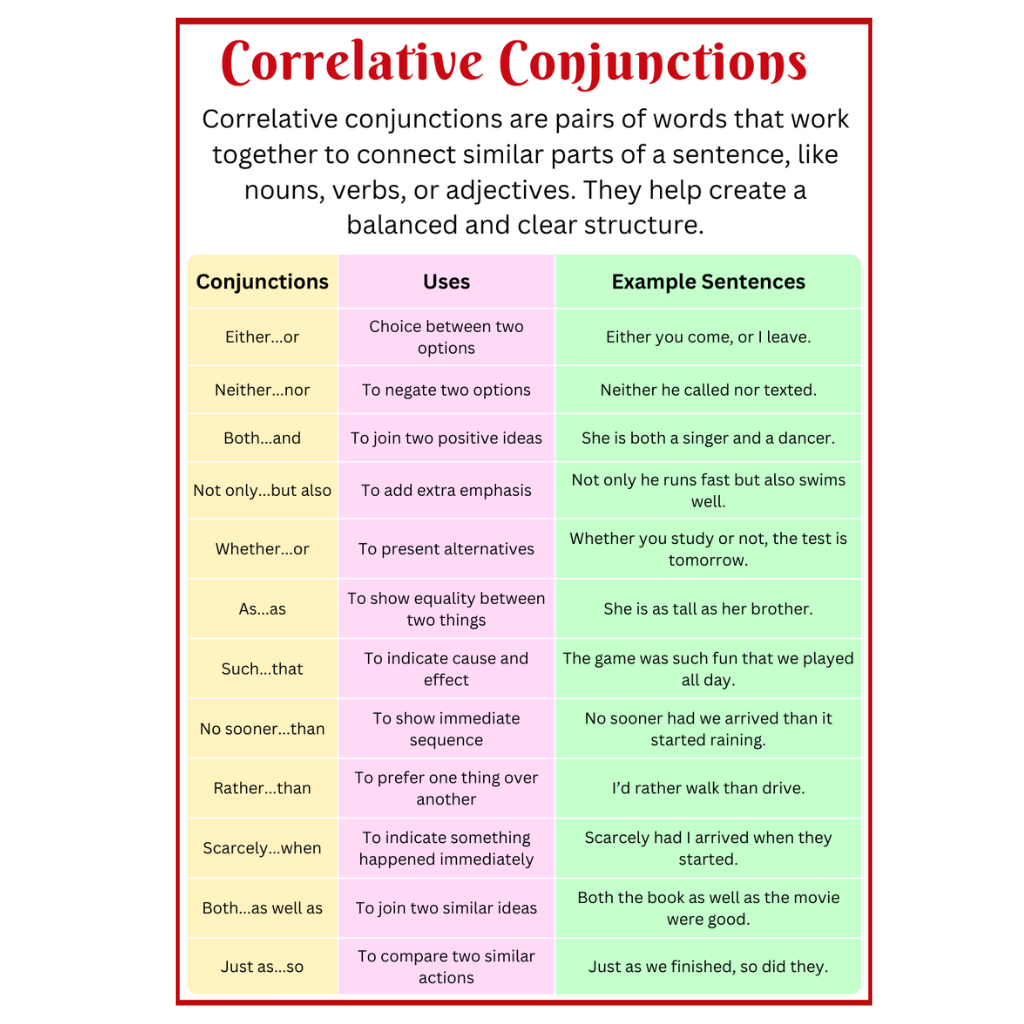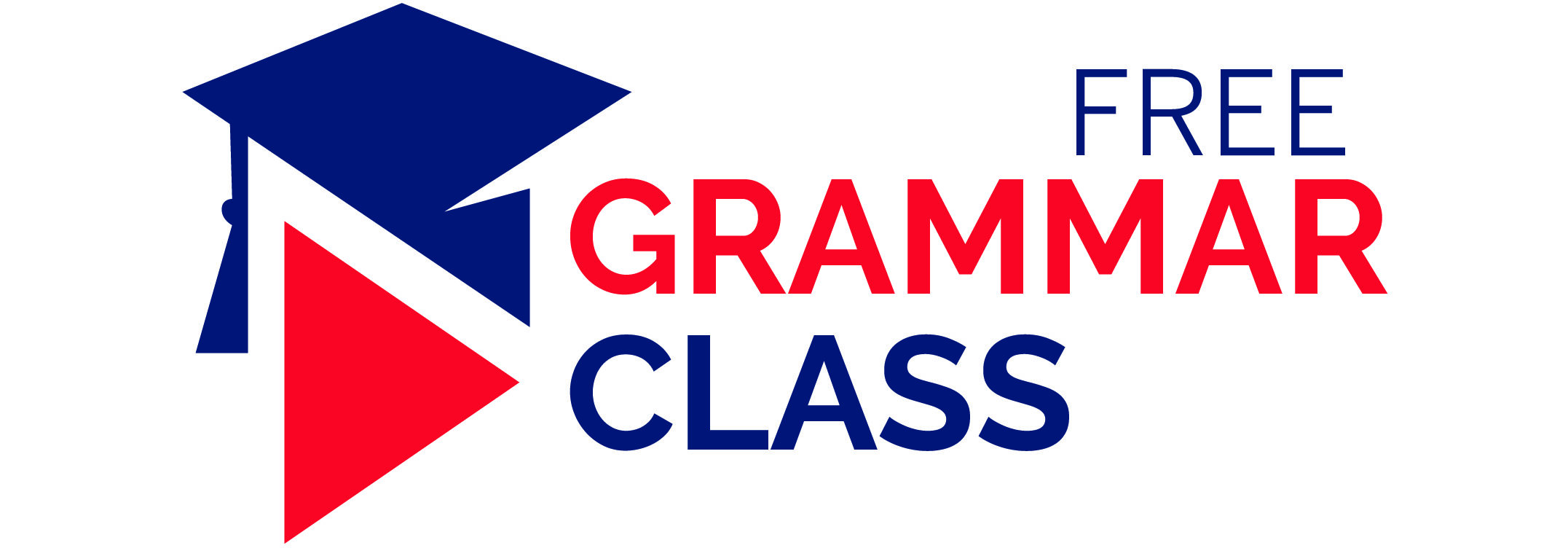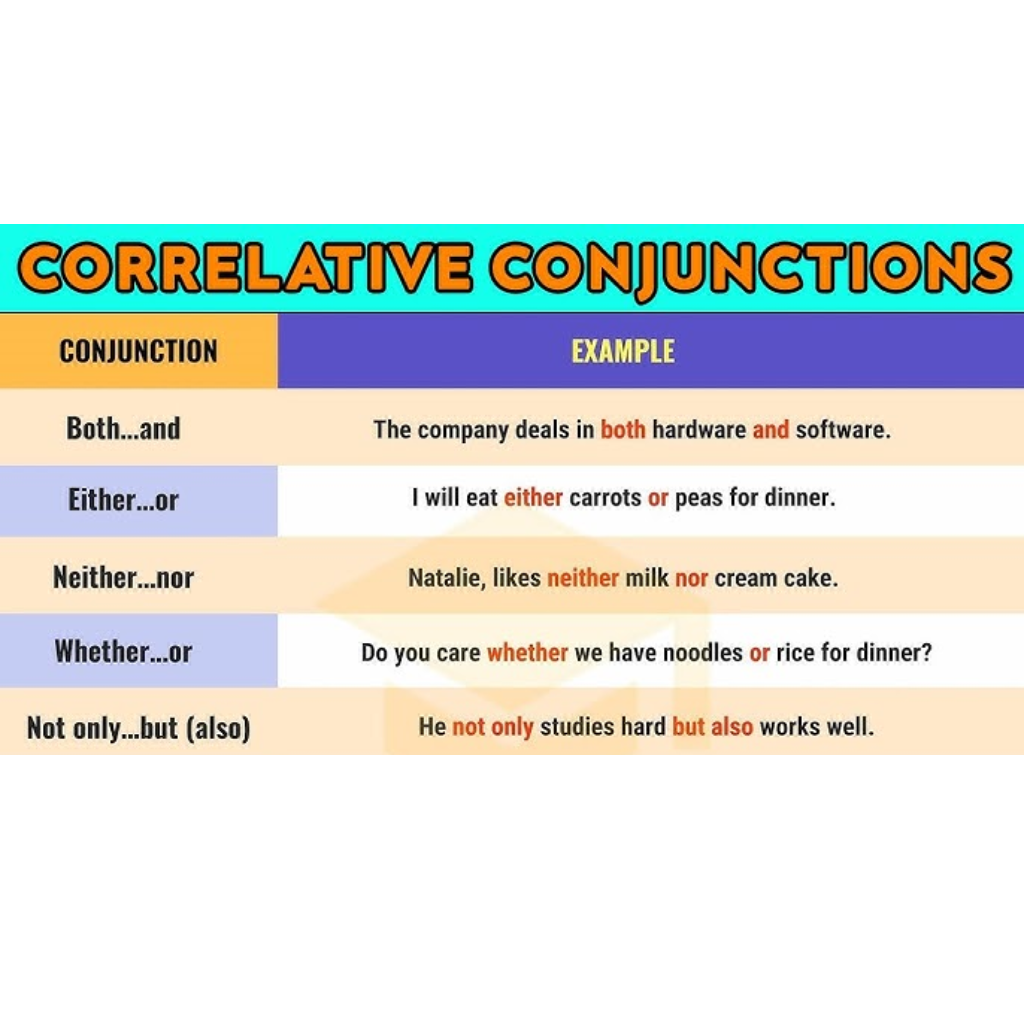Correlative conjunctions are a type of conjunction that link sentences or clauses in pairs. They link parts of sentences which are equal. Here are some common examples of correlative conjunctions like, ”either…or,” “neither…nor,” and “both…and.” this is how we use in sentences like, Either you finish your lunch or you won’t be allowed to play. the pair ”either…or” are connecting two possible outcomes. Here down we have listed correlative conjunctions and their use in sentences…
What Are Correlative Conjunctions?
Correlative conjunctions are used to link two equal parts of sentences. These conjunctions always come in pairs. some examples of correlative conjunctions are listed below:
| Correlative pairs Both … and | Example of usage |
| Either … or | Both Sara and Ali are having fun. |
| Neither … nor | Neither cupcake is nice nor a cookie. |
| Not only … but also | Not only Jack is clumsy but also. |
| Whether … or | Whether you go or not is up to you. |

Why Are Correlative Conjunctions Important?
Correlative conjunctions are important because they connect sentences or clauses in a fluid way. These conjunctions balance the sentences and clarify the meaning properly. Without these conjunctions might feel incomplete. They make our ideas more logical and polished.
How to Use Correlative Conjunctions Correctly
To use correlative conjunctions correctly, we should ensure that structure of the sentence is corresponding. They should also be joined grammatically equal. For example:
- Incorrect: Both he likes to cook and running.
- Correct: Both he likes cooking and running.
In the incorrect example, “cook” is a verb, while “running” is a noun, creating a mismatch. The corrected sentence uses corresponding structures (both gerunds, “cooking” and “running”).
Common Correlative Conjunctions
Let’s zoom into the most used correlative conjunction in English language with examples and explanations:
1. Both … and
Use: To join two similar ideas.
Example:
- Both the rice and soup was good.
Here, “rice” and “soup” are joined by both … and, showing they are equally important in the sentence.
2. Either … or
Use: To present two choices.
Example:
- You can choose either snacks or drinks for dinner.
In this case, “either … or” gives two possible options.
3. Neither … nor
Use: To negate two elements.
Example:
- Neither Zoe nor Jack wanted to leave.
Neither … nor indicates that both Zoe and Jack didn’t want to leave.
4. Not only … but also
Use: To emphasize two elements.
Example:
- She’s not only an army officer but also a successful business woman.
The structure highlights two positive qualities about the subject.
5. Whether … or
Use: To express doubt or a choice between two alternatives.
Example:
- I don’t know whether he will go or not.
This conjunction is used to present uncertainty or two possibilities.
Tips for Using Correlative Conjunctions in Sentences
Maintain Parallelism: Make sure that the elements in the sentence are grammatically same.(like verb+ verb, noun + noun)
Balance the Sentence: Correlative conjunctions should connect elements with equal importance.
Avoid Overuse: While correlative conjunction can be useful, but at the same time if use them more than usual it can make our writing feel repetitive, that’s use a strategy.
Examples of Correlative Conjunctions in Everyday Use
| Correlative Pair Both … and | Sentence Example Both studying and playing games should be maintained. |
| Either … or | Either you go to the party or the prom. |
| Neither … nor | Neither the principal nor the teachers knew about the problem. |
| Not only … but also | Not only he is a doctor but also a famous writer. |
| Whether … or | Whether you wear a skirt or a pant, I won’t stop you. |
| Just as … so As much … as | I arrived at the station just as the train so. He enjoys cooking as much as reading. |
Advanced Use of Correlative Conjunctions
The advanced use of correlative conjunctions can be good for today’s new and advanced leaners. These conjunctions are used for a more deep and complex meaning and are helpful for more academic writing and for reading comprehensions.
Example:
- I will be happy whether it’s rainy or sunny.
In this example, It joins two opposite possibilities and expresses that the result remains unchanged.
Advanced Sentence Structures:
- Both learning and playing with balance is a good
- Not only she win the match but also broke a record.
Examples of Correlative Conjunctions
| Correlative pairs Either…or | Example of usage Either you go or not, but I will go. |
| Neither…nor | Neither are you paying attention nor writing. |
| Both…and | I am proud of both Jack and Sarah. |
| Not only…but also | Not only he is playing but also learning from it. |
| Whether…or | Whether It’s rainy or sunny I will go to school. |
| As…as | She is as brave as a lion. |
| Such…that | It was such a weird story that’s why it sold out. |
| No sooner…than | No sooner he reached the station that the train left. |
| Rather…than | I will study rather then take a nap. |
| Scarcely…when | Scarcely I reached the lecture when it had ended. |
| Hardly…when | I sleep hardly at night when it’s raining. |
| So…that | She’s so rude that everyone hates her. |
| Just as…so | It snowed Just as I went out, so I got a cold. |
| If…then | If plan A will fail then will apply plan B. |
| Between…and | It’s between north and south Korea. |
| Whether…or not | I will leave whether it’s raining or snowing outside. |
| The more…the more | The more you work the more you get. |
| The less…the less | The less you eat the less energy you get. |
| As much…as | You can take as much as you want. |
| As many…as | Take as many mangoes as you want. |
| Just as…..so | Just as she Arrived the show started so. |
FAQ’S:
- What is correlative conjunction and examples?
Correlative conjunctions are used to link two equal parts of sentences. These conjunctions always come in pairs. some examples of correlative conjunctions are Neither…nor, Either….or.
- What are the 5 examples of conjunction sentences?
- I tried to cheat in exam but got caught instead.
- I have two dogs and a fish.
- I’d like a car for commuting to office.
- You can have ice cream or burger.
- Neither the yellow dress nor the black dress looks good on you.
Conclusion:
Correlative conjunctions play an essential role in clarifying the meaning of the sentence. Learning it’s advanced use can make our writing look more attractive, plus these type of conjunctions are used in Academic and professional writing which has more deeper meaning. learning these conjunctions can make it easy to understand the deep meanings. Next time we will make a more interesting post for you all!

